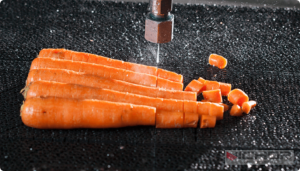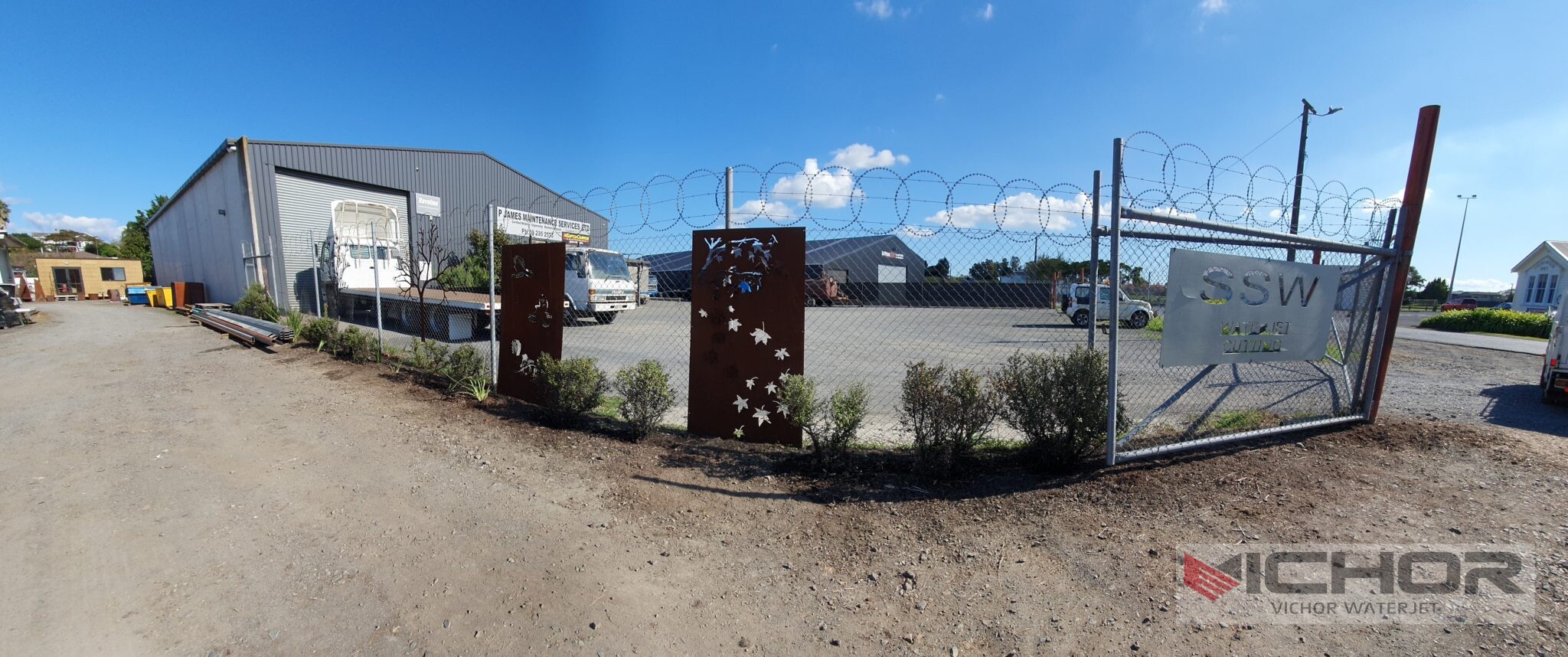
7 Facts About Water Jet Machine Pressure You Need to Know for Optimal Performance
What if the single most critical factor determining your cutting project’s success wasn’t the material you chose, but the invisible force slicing through it? That force is water jet machine pressure, the very heart of this versatile technology. From delicately etching a fragile tile to slicing through a 12-inch slab of titanium, the pressure generated by these machines is the magic wand that makes it all possible. It’s not just about raw power; it’s about precision, control, and efficiency. Understanding water jet machine pressure is the key to unlocking the full potential of this tool, whether you’re a seasoned engineer or exploring its capabilities for the first time. This article dives deep into seven essential aspects of this core component, demystifying how it works and why it matters so much for your results.
The Core Principle: How Water Jet Machine Pressure is Generated
At its simplest, a waterjet cutter is a master of intensification. It doesn’t create high water jet machine pressure by brute force with a massive pump. Instead, it uses a clever principle of hydraulics. A standard electric motor powers a hydraulic pump, which generates moderate oil pressure (typically around 3,000 psi). This oil pressure is then directed to a device called an intensifier.
The intensifier contains a large piston on the oil side connected to a much smaller piston on the water side. When the oil pushes the large piston, it forces the small piston to act on a sealed volume of water. Because the area of the water piston is drastically smaller, the pressure is multiplied. For example, if the area ratio is 20:1, 3,000 psi of oil pressure becomes 60,000 psi of water pressure. This ultra-high-pressure water is then stored in a special tubular vessel called a “suppressor” or “accumulator” to dampen pulsations before being delivered to the cutting head. This process is the fundamental engine of the entire system.
Pressure Ranges and Their Impact on Cutting Capability
Not all waterjets operate at the same water jet machine pressure. The industry standard for most modern machines ranges from 60,000 psi (4,136 bar) to 90,000 psi (6,206 bar) and beyond. This range is not arbitrary; it directly dictates what the machine can and cannot do.
60,000-70,000 PSI: This was the long-standing standard and is still effective for cutting a wide array of materials like stone, glass, plastics, and thinner metals. It offers a good balance between performance and component wear.
87,000-90,000 PSI+: The new high-pressure standard. This elevated water jet machine pressure delivers significant advantages. It allows for faster cutting speeds (increasing throughput), the ability to cut thicker materials, and often a cleaner, more precise cut with a reduced “kerf taper” (the V-shape on the cut edge). The key trade-off is increased wear on components, which must be engineered to withstand these extreme forces.
The Direct Link Between Pressure, Speed, and Thickness
One of the most practical reasons to understand water jet machine pressure is its direct correlation to productivity and capability. Think of pressure as the engine’s horsepower.
Cutting Speed: Higher pressure means each abrasive particle in the stream is accelerated to a higher velocity. This results in more kinetic energy impacting the material, allowing the jet to erode it faster. A job that might take 10 minutes at 60,000 psi could be completed in 6-7 minutes at 90,000 psi, dramatically improving shop floor efficiency.
Material Thickness: The energy of the jet must be sufficient to penetrate the entire depth of the material before it dissipates. Higher water jet machine pressure maintains a focused, energetic stream for a longer distance, enabling clean and effective cutting of thicker blocks. While a 60,000 psi system might cap out at 6-inch thick steel, a 90,000 psi system can confidently handle 10 inches or more.
Abrasive and the Pressure Partnership
Pure waterjets (used for cutting soft materials) rely solely on water jet machine pressure. However, for cutting metals and hard composites, an abrasive material, typically garnet, is introduced into the stream. The relationship between pressure and abrasive is synergistic.
The high-pressure water stream acts as an accelerator. It creates a vacuum that draws in the abrasive particles, mixing them in a focus tube and propelling them at speeds exceeding twice the speed of sound. The water jet machine pressure is responsible for this acceleration. The abrasive particles then perform the actual “cutting” through micro-machining and erosion. Without sufficient pressure, the abrasive cannot reach the velocities needed to cut hard materials effectively. The quality and rate of abrasive feed are critical, but they are entirely dependent on the high-pressure water stream to function.
The Trade-Off: Component Wear and Operating Costs
It’s crucial to recognize that operating at extreme water jet machine pressure comes with a cost. The components that handle this pressurized water are subject to immense stress and wear. Key consumable parts include:
Orifice/Sapphire Nozzle: This jeweled nozzle (often made of sapphire or diamond) creates the initial, fine water jet. Higher pressure leads to faster orifice wear, which can degrade jet coherency and cut quality.
Focus Tube/Mixing Tube: This tube is where water and abrasive mix. It experiences direct abrasive erosion and has a limited lifespan. Higher pressure accelerates this wear.
High-Pressure Seals and Valves: All seals containing the ultra-high-pressure water are under constant duress.
Therefore, selecting the right water jet machine pressure for your application is an economic decision. Running a 90,000 psi system for simple foam cutting may be overkill and lead to unnecessarily high consumable costs. Conversely, using a low-pressure system for heavy-duty metal cutting will be slow and ineffective, costing more in labor and lost time.
Pressure vs. Flow: Understanding the Difference
A common point of confusion is the difference between pressure and flow rate in a water jet system. They are distinct but related concepts.
Pressure (PSI or Bar): This is the intensity or “oomph” behind the water. It’s the force per unit area. Water jet machine pressure determines the velocity of the stream and its ability to penetrate hard, thick materials.
Flow Rate (GPM or LPM): This is the volume of water moving through the system per minute. It influences the amount of abrasive that can be effectively entrained and carried.
A simple analogy: Pressure is like the sharpness of a knife, while flow is the length of the blade. A very sharp knife (high pressure) can cut deeply, but a long blade (high flow) is needed to cut a large object in a single swipe. Both parameters must be optimally balanced by the machine’s pump for peak performance.

Optimizing Pressure Settings for Different Materials
A skilled operator doesn’t just set the water jet machine pressure to maximum and leave it. Different materials require different pressure strategies for optimal quality and efficiency.
Hard, Brittle Materials (Granite, Glass): Often benefit from high pressure combined with a slower traverse speed to ensure a clean, fracture-free cut.
Soft Materials (Foam, Rubber, Food): Require much lower pressures. Using a pure waterjet with reduced pressure prevents damage and allows for intricate, high-speed cutting.
Metals (Steel, Aluminum, Titanium): Typically utilize the highest available system pressure to maximize cutting speed and edge quality, especially as thickness increases.
Laminated or Composite Materials: May require fine-tuned pressure to prevent delamination or separation of layers during the cut.
Modern CNC controllers often have material libraries that automatically suggest optimal pressure, speed, and abrasive settings, but understanding the underlying principle of water jet machine pressure control allows for expert-level fine-tuning.
Frequently Asked Questions (FAQ)
Q1: What is the typical lifespan of high-pressure components like the orifice and focus tube?
A1: Lifespan varies significantly based on operating pressure, abrasive quality, and hours of use. A sapphire orifice in a 90,000 psi system might last 100-200 hours, while a focus tube may need replacement every 50-100 hours. Using low-quality abrasive can reduce this lifespan dramatically.
Q2: Can the pressure on a water jet machine be adjusted?
A2: Yes, absolutely. Modern water jet machines allow operators to adjust the water jet machine pressure through the CNC control system. This is essential for matching the pressure to the specific material and thickness being cut to optimize results and manage operating costs.
Q3: Is higher water jet machine pressure always better?
A3: Not always. While higher pressure enables faster cutting and greater thickness capacity, it also accelerates component wear and increases energy consumption. The “best” pressure is the one that provides the required cut quality and speed for your specific application in the most cost-effective manner.
Q4: What are the safety implications of working with such extreme pressures?
A4: Extreme caution is paramount. The water stream is invisible and can cause severe injury or damage before it’s seen or heard. Machines are equipped with multiple safety interlocks and enclosures. Never bypass safety systems, and always follow strict lockout/tagout procedures during maintenance. The pressure vessel and lines are designed with immense safety factors.
Q5: How does water quality affect the high-pressure system?
A5: Water quality is critical. Impurities and minerals in untreated tap water can act as an abrasive inside the pump and intensifier, causing premature wear to seals, check valves, and the orifice. Most systems require a water purification system (like reverse osmosis or deionization) to ensure the water is clean and particle-free, protecting the expensive high-pressure components.
continue reading
Related Posts
- 1349 words6.8 min read



